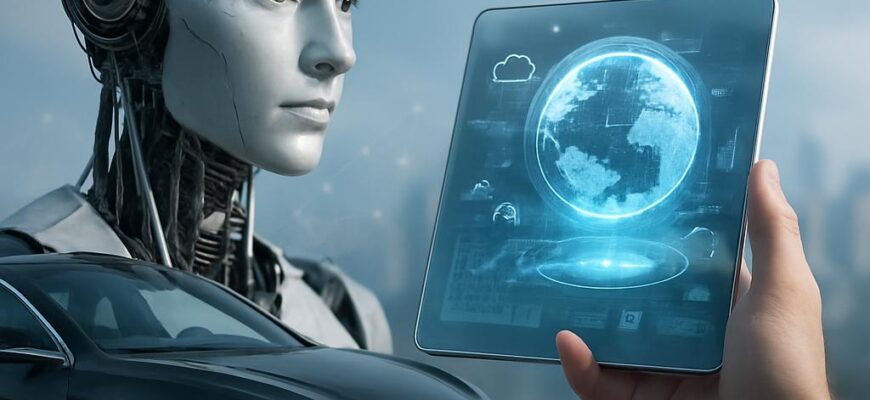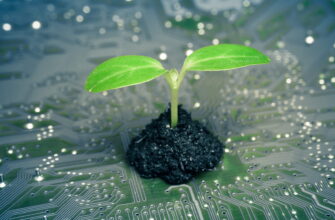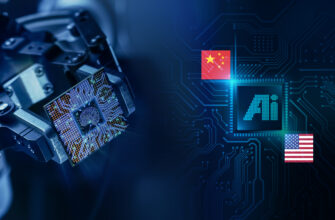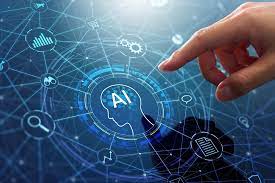The next decade will not bring a single revolution but a tapestry of advances knitting together computing, connectivity, biology, and materials science. I want to map the threads you’ll be hearing about a lot — the practical innovations that will change workplaces, homes, cities, and health care by 2030. This is not a speculative exercise; it’s a look at momentum, deployment patterns, and the cross-pollination that turns lab breakthroughs into ordinary tools.
- The landscape in 2030: forces that accelerate change
- AI beyond narrow tasks: general-purpose, trustworthy intelligence
- Ubiquitous connectivity: 6G, mesh networks, and satellite internet
- Computing at the edge and the rise of neuromorphic chips
- Quantum moves from labs to usable services
- Human-machine interfaces: AR, VR, and brain-computer interfaces
- Autonomous systems: transport, logistics, and aerial drones
- Sustainable tech: clean energy, carbon management, and circular design
- Bio and health tech: precision medicine and synthetic biology
- Cybersecurity and digital trust in a decentralized world
- The social and economic implications: jobs, policy, and inequality
- What companies and individuals should do now
- Quick comparison: emerging technologies and their near-term impact
- The big picture for 2030 and how to stay curious
The landscape in 2030: forces that accelerate change
Three converging forces will push new tools into daily use: dramatically cheaper computing, pervasive low-latency networks, and massive data flows shaped by smarter software. When those three line up, products that were once niche become practical at scale, and business models rearrange themselves to exploit the new possibilities. Expect a steady cadence of upgrades rather than one dramatic “moment” — incremental improvements that compound into visible shifts.
Regulation, consumer trust, and supply chains will act as brakes or accelerators depending on how they evolve. For example, privacy rules could encourage more on-device processing, while favorable standards could speed adoption of renewable energy technologies across industry. Observing these non-technical levers is as important as tracking chips and algorithms when judging which innovations will stick.
My experience advising early-stage startups and attending industry conferences has taught me that timing is rarely about a single invention; it’s about ecosystems aligning. A startup with a great sensor becomes viable only after network costs fall or a new manufacturing technique emerges to make the sensor affordable. In 2030 the winners will be those that build across several of these vectors.
AI beyond narrow tasks: general-purpose, trustworthy intelligence
By 2030 artificial intelligence will move further from specialized models to systems that can handle broader, cross-domain tasks while adapting on the fly. Models that learn continuously and operate under resource constraints will make AI useful in more places, from factory floors to pocket devices. The emphasis will shift from raw accuracy to robustness, interpretability, and integration with human workflows.
Practical AI will focus on multimodal reasoning — combining text, images, audio, and sensor data — and on delivering explanations users can understand. That change will help AI move out of the lab into regulated industries like finance and healthcare, where trust matters as much as performance. The companies that build transparent audit trails and human-in-the-loop systems will capture the largest markets.
In my work with product teams, the immediate challenge is not sophistication but usability: it’s easier to ship a slightly less capable tool that people can control than to deploy a powerful model that mystifies users. Expect productivity gains across white‑collar jobs as AI automates routine tasks and surfaces insights, while also creating demand for new roles centered on oversight, data stewardship, and AI-human collaboration.
Ubiquitous connectivity: 6G, mesh networks, and satellite internet
Connectivity in 2030 will be richer and more geographically uniform. 6G research promises terabit-class links and sensing capabilities woven into networks, while low-Earth orbit satellites will reduce broadband deserts and provide resilient backhaul. Together, these improvements will shrink latency and expand bandwidth to the point where cloud-edge hybrid architectures become seamless.
Edge computing will benefit directly from this infrastructure, allowing real-time applications such as remote surgery assistance, industrial control, and augmented reality to operate reliably outside traditional data centers. Mesh networking and decentralized protocols will also grow in importance for local resilience, enabling devices to share data and compute without a central point of failure. These patterns will change how services are designed and delivered.
One concrete sign of change is how rural broadband programs and private satellite constellations have started to cooperate on trials. Where I live, a community pilot paired a local mesh with satellite backup to keep an agrotech monitoring system online through storms. That kind of practical resilience will be a selling point for enterprises and municipalities alike.
Computing at the edge and the rise of neuromorphic chips
As networks improve, more intelligence will migrate toward the edge: phones, gateways, cameras, and sensors will do heavy lifting locally. This reduces latency, preserves privacy, and lowers bandwidth costs. It also drives demand for energy-efficient processors designed specifically for on-device inference and continual learning.
Neuromorphic and other specialized accelerators will gain traction where energy and latency matter most. These chips emulate aspects of biological neurons to run certain workloads much more efficiently than general-purpose processors. The result will be smarter, longer-lived devices — from hearing aids with richer contextual awareness to industrial sensors that detect anomalies without constant cloud connectivity.
Hardware startups and major foundries are both racing to commercialize these architectures, and developers will adapt by designing models that tolerate low-precision arithmetic and intermittent connectivity. The combination of custom silicon, optimized software stacks, and distributed orchestration platforms will define where edge computing excels versus centralized cloud services.
Quantum moves from labs to usable services
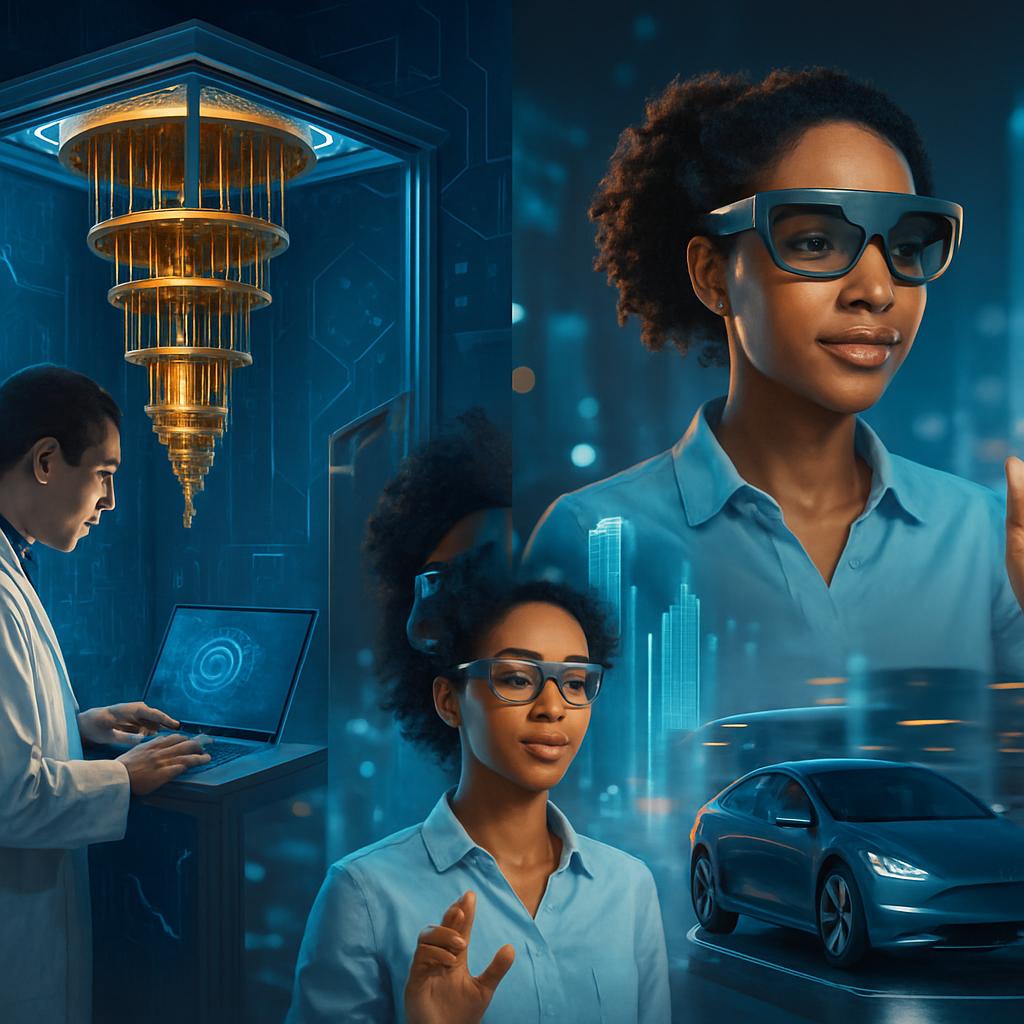
Quantum computing will not replace classical computing in 2030, but it will become a practical tool for a narrower range of problems by way of hybrid quantum-classical workflows. Industries such as materials science, logistics optimization, and cryptography will benefit first from quantum accelerators accessed through the cloud. Expect quantum advantage for well-chosen, specialized tasks rather than general-purpose supremacy.
For many companies the near-term way to leverage quantum will be through cloud providers offering quantum processing units (QPUs) bundled with simulators and development toolchains. That delivery model lowers the barrier to experimentation and allows businesses to evaluate whether specific problems show promise. Companies that invest early in quantum-aware algorithms will be better positioned when hardware capabilities expand.
A practical example: in a materials discovery project I saw, quantum-inspired optimization methods accelerated candidate screening even before fully fault-tolerant machines existed. The lesson is that hybrid approaches often give immediate returns while creating a pathway to more advanced quantum resources.
Human-machine interfaces: AR, VR, and brain-computer interfaces
Augmented reality and virtual reality will migrate from novelty to productivity tools, with lighter hardware, better spatial mapping, and more natural interactions. AR glasses will surface contextual information during work tasks, replacing many smartphone interactions and creating hands-free workflows in fields like manufacturing, logistics, and field service. The key is comfort — devices that people can wear for hours without fatigue.
Brain-computer interfaces (BCIs) will make slower but meaningful progress, initially focused on medical applications such as prosthetic control and communication for people with severe paralysis. Non-invasive and minimally invasive approaches will expand into consumer wellness and productivity niches, though ethical and safety questions will limit rapid mass-market adoption. Regulation and clear consent models will shape how quickly BCIs leave the clinic.
I’ve tested early AR prototypes and noticed that utility rises sharply when spatial information is reliable and latency vanishes. Practical AR experiences depend on a full-stack design: sensors, efficient compute, and human-centered software. Those combined improvements will be the turning point between gimmick and daily tool.
Autonomous systems: transport, logistics, and aerial drones
Autonomy in vehicles and drones will continue to evolve through mixed deployments where human oversight and automation coexist. Level‑4 autonomy will reach maturity in limited environments such as industrial campuses, mining sites, and closed logistics corridors. Broader public roads will see gradual increases in driver-assist capabilities and more sophisticated fleet management systems.
Last-mile delivery and warehouse automation will be the earliest mass-market beneficiaries, as predictable routes and controlled environments make automation both safe and cost-effective. Aerial drones will expand beyond hobbyist use into regulated commercial roles like infrastructure inspection, emergency response, and time-sensitive deliveries. Integration with smart-city infrastructure will be the key to scaling these services safely.
From advising a logistics firm, I learned that automation economics are seldom about the single robot; they’re about orchestration, predictable maintenance, and routing. Companies that invest in operational software and resilience will extract value before fully autonomous hardware becomes ubiquitous.
Sustainable tech: clean energy, carbon management, and circular design

Climate imperatives will push energy and materials technologies into the mainstream. Solar and wind will continue to scale, paired with better storage solutions such as next‑generation batteries and long-duration storage systems. Cost declines will make renewables not just environmentally preferable but economically attractive for utilities and industry alike.
Carbon management — including capture, utilization, and removal — will become commercially relevant for hard-to-decarbonize sectors. Innovations in direct air capture, mineralization, and electrochemical conversion will diversify options for reducing atmospheric CO2. Simultaneously, materials design and circular-economy approaches will shift product development toward reuse, repair, and recyclability rather than single-use cycles.
In a pilot project I saw, a manufacturing plant retrofitted its power and waste streams to drastically reduce both emissions and operating costs. That kind of operational pragmatism will make sustainability a competitive advantage rather than a compliance burden for many firms by 2030.
Bio and health tech: precision medicine and synthetic biology
Healthcare will become more personalized, predictive, and proactive as genomics, wearable sensors, and machine learning combine to deliver tailored care. Precision medicine will move beyond oncology into chronic disease management and preventive strategies, with diagnostics informed by continuous physiological data rather than episodic tests. This shift will change how clinicians work and how patients engage with care.
Synthetic biology will enable novel therapeutics, sustainable materials, and tailored agricultural solutions. Engineered microbes and cell therapies will address problems that were previously intractable, while biomanufacturing platforms will reduce the time from concept to production. Regulatory frameworks will be crucial to ensure safety without stifling beneficial innovations.
During a visit to a biotech incubator, I watched teams iterate on genetic constructs in cycles that used to take months, not years. That speed, combined with better computational design tools, will accelerate discovery and bring more treatments into clinical trials within the next decade.
Cybersecurity and digital trust in a decentralized world
As systems decentralize and data becomes more distributed, cybersecurity will become a strategic differentiator. Zero-trust architectures, verifiable credentials, and secure hardware roots of trust will be prerequisites for services that handle sensitive data. Identity, consent, and provenance will shape consumer trust and industry compliance.
Cryptographic advances such as post-quantum algorithms and verifiable computation will be important safety measures as quantum capabilities grow and cloud services proliferate. Enterprises will adopt layered defenses that mix traditional network security with behavioral analytics and hardware-backed protections. The businesses that invest early in resilient architectures will find themselves better positioned against both common threats and emerging risks.
From hands-on security audits, I’ve seen that small oversights scale quickly in complex systems. The most effective security programs combine automation, rigorous patching, and an organizational culture that treats security as part of product design rather than an afterthought.
The social and economic implications: jobs, policy, and inequality
Technological change will create new jobs even as it displaces others, and public policy will determine how benefits are distributed. Education systems must adapt faster, focusing on continuous reskilling, domain expertise, and interdisciplinary problem solving. Social safety nets and labor policies will matter as transitions accelerate in certain sectors.
Inequality can widen if access to advanced tools remains concentrated among a few firms or regions. Conversely, lowered costs for compute and connectivity can democratize access to services and markets for entrepreneurs worldwide. Policymakers and business leaders will face trade-offs between fostering innovation and ensuring equitable outcomes.
Community-led initiatives often provide practical models: regional tech hubs, apprenticeship programs, and public-private partnerships can smooth transitions. Observing effective local programs gives a clearer sense of what scalable policy solutions look like in practice.
What companies and individuals should do now
Preparing for 2030 requires a mix of strategic bets and practical steps. Companies should prioritize modular architectures that allow components — AI, connectivity, and edge compute — to evolve independently while remaining interoperable. That reduces lock-in and keeps options open as standards emerge.
Individuals should cultivate complementary skills: critical thinking, systems literacy, and domain-specific knowledge that machines find hard to replicate. Learning how to use AI tools responsibly, understanding data privacy basics, and gaining fluency in collaborative platforms will be valuable across careers. Practical experience — building projects, contributing to open-source, or joining industry pilots — accelerates learning more than passive courses.
Below are concrete steps to act on today:
- Audit data and compute needs to identify immediate savings and future risks.
- Pilot edge and AI use-cases in controlled environments to measure ROI before scaling.
- Invest in cybersecurity hygiene and identity frameworks now to avoid costly retrofits.
- Engage with regulators and community stakeholders early to shape workable standards.
These steps will pay dividends by making organizations resilient and adaptable as technologies mature.
Quick comparison: emerging technologies and their near-term impact
To help prioritize, here’s a compact overview of several technologies and what to expect by 2030. Use this as a strategic checklist when evaluating investments and pilots.
| Technology | Primary impact | Expected maturity by 2030 |
|---|---|---|
| Multimodal AI | Productivity, automation, decision support | High – widespread deployment in enterprise |
| 6G and LEO satellites | Connectivity, remote services, resilience | Medium – broader availability and capacity |
| Neuromorphic / specialized silicon | Energy-efficient edge inference | Medium – commercial niche devices |
| Quantum computing | Optimization, materials, cryptography | Low-medium – useful for targeted problems |
| Synthetic biology | New therapeutics and materials | Medium – accelerating commercialization |
| AR/BCI interfaces | Workflows, accessibility, hands-free interaction | Medium – mainstream for specific tasks |
This table highlights where to focus proof-of-concept efforts and where to expect gradual, steady returns on investment. Businesses that map these technologies to concrete revenue or cost-saving opportunities will outperform peers.
The big picture for 2030 and how to stay curious
The decade ahead will feel less like a single technological renaissance and more like a reweaving of the systems that touch everyday life. Incremental improvements in hardware, software, and materials, combined with smarter regulation and new business models, will create visible change that feels inevitable only in hindsight. Being prepared means watching ecosystems, not isolated breakthroughs.
Stay curious by following cross-disciplinary conversations, joining pilots, and investing time in hands-on learning. The most durable advantage will be a mindset that combines technical literacy with an appetite for practical experimentation. That approach helps you spot which innovations are hype and which will become part of the infrastructure we all rely on.
For more articles like this one and deep dives into the innovations shaping the next decade, explore our technology coverage at https://themors.com/technology-innovation-news/.

